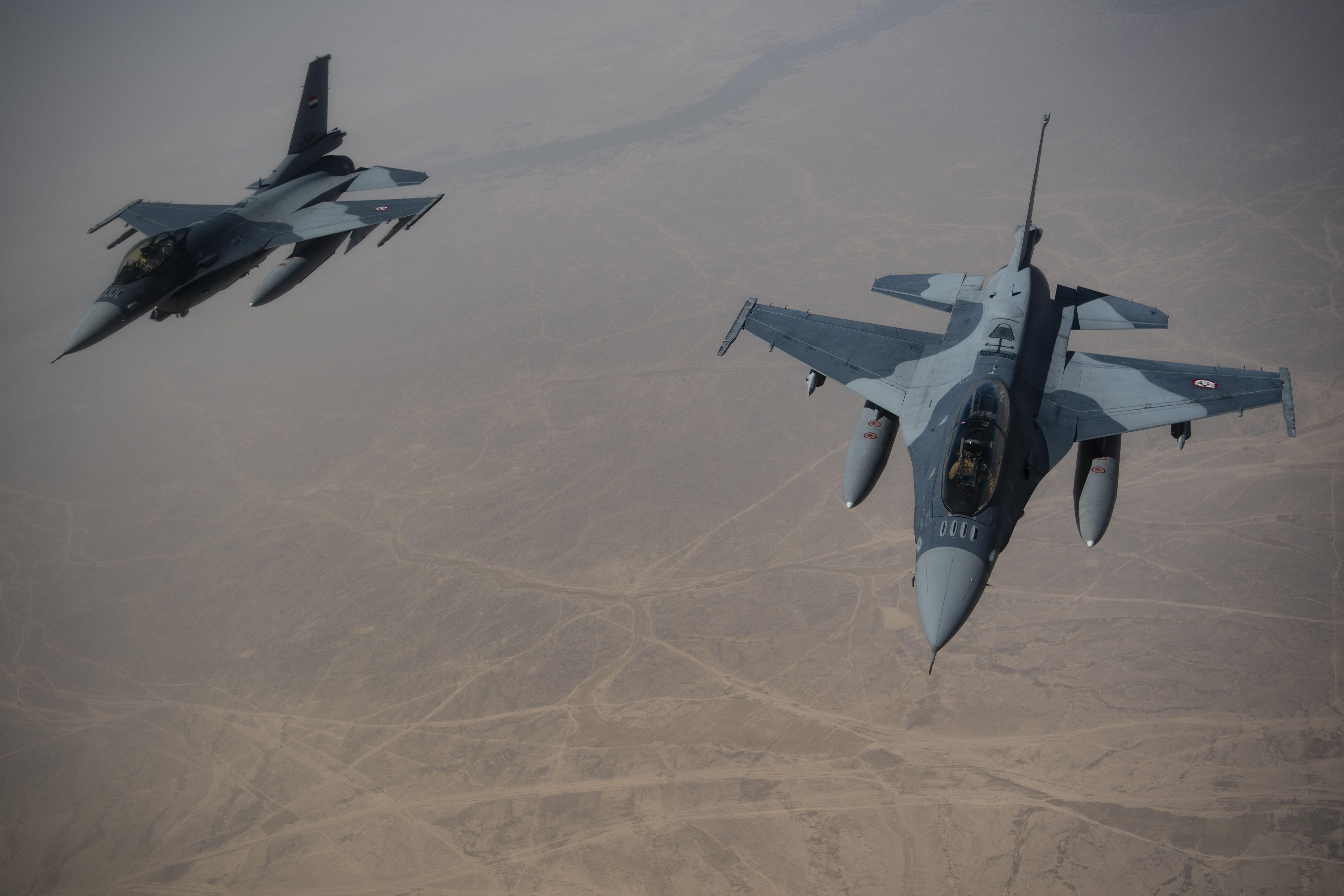
Iraqi Air Force F-16 Fighting Falcons conduct a training mission over Iraq May 26, 2019. (U.S. Air Force photo by Master Sgt. Russ Scalf)
On February 12, Major General Yahya Rasool, the spokesman for the Commander-in-Chief of the Iraqi Armed Forces, announced that ISIS Wali [governor] in the eastern province of Diyala was killed in Iraqi airstrikes.
In a brief statement, the spokesman said that the Wali, Sami Mohan, was killed along with six other terrorists of ISIS when F-16 fighter jets of the Iraqi Air Force (IQAF) targeted their hideout in the Hamrin mountain chain with two pinpoint airstrikes.
The IQAF carried out the airstrikes in coordination with the Military Intelligence Directorate, who provided information on the hideout of Mohan, also known as “Ibn Abd al-Rahman”. The killing of the Wali was without a doubt a major blow to ISIS.
The airstrikes were the most recent in a series of Iraqi aerial attacks that targeted ISIS cells in western, northern and eastern Iraq. All the attacks were carried out by the IQAF in cooperation with local intelligence services.
The IQAF has been operating against ISIS cells using its own capabilities, without any direct support from the United States-led coalition.
The recent operations by the Iraqi military, intelligence and security forces have weakened ISIS influence in the country’s western northern and eastern regions. Nevertheless, the terrorist group’s insurgency will likely continue throughout the year.






Iraqi leaders are now slaves of the FM and have no independence or autonomy. It’s merely another killing field run for profit by the neocons and the rest of the satanists. It will forever be a country riddled with death and birth defects: exactly how they planned it to turn out.
Some yes, but there are many Iraqis who want both US and Iran out of their countries.
JHK is crying now
Where are ISIS being dunded from TARGET there.